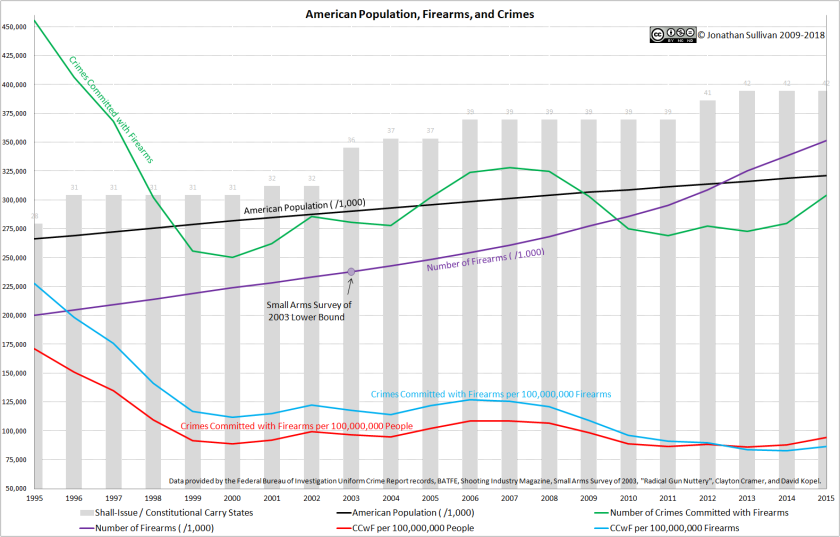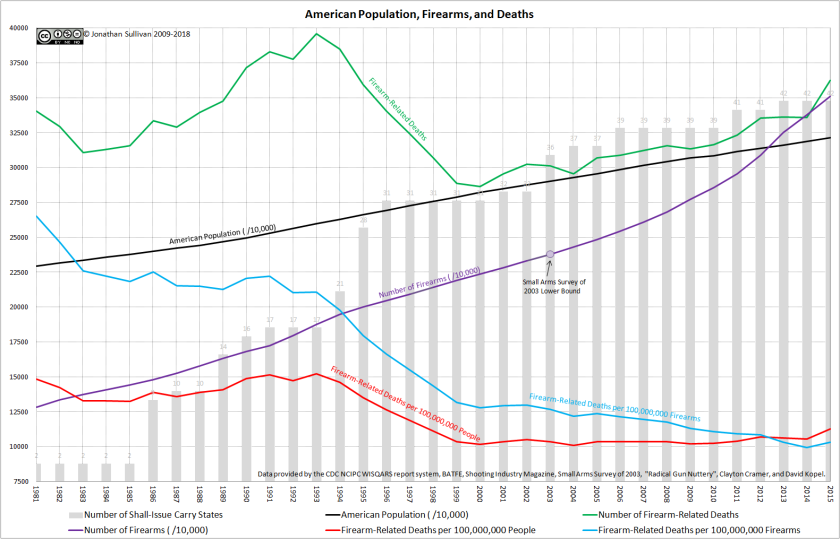By and large, I am generally disinclined to believe Pew’s / Gallup’s / [insert polling agency here]’s reporting of firearm ownership rates in America. First and foremost, there are some pretty significant flaws in modern polling methods. Second and perhaps more importantly, based on my entirely-anecdotal-but-decades-long experience with the firearm-owning public, the probability of an average firearm owner answering truthfully when a random stranger calls them on the phone or knocks on their door asking if they own firearm is… vanishingly small.
However, exclusively for the sake of discussion, I am willing to accept a small part of this 2017 Pew Research Center report on the demographics of firearm ownership. If you read through it, you will see that people who live in rural areas are approximately 2.4x more likely to own a firearm than people who live in urban areas (46% of rural residents reported owning a firearm, versus 19% of urban residents).
Given that we are talking about rates, Pew has already normalized for the substantial population differences between the two areas, so if the “gun control” extremists’ hypothesis of “more guns = more ‘gun deaths'” were true (we already know it is not, but bear with me here), one would expect rural areas to have a strictly higher rate of firearm-related fatalities, and probably close to 2.4x higher, right?
Unsurprisingly, that hypothesis continues to fail:

Naturally, the firearm-related fatality rates come from the CDC’s WISQARS system, by way of their new “Metro / Non-Metro Indicator”.
Naturally, there will be some differences as to how WISQARS counts “urban” incidents as compared to Pew’s methods, but even accounting for those slight variations… well, the chart speaks for itself, as I always endeavor to accomplish.
You know, if they were not so busy trying to paint hundreds of millions of peaceful Americans as children-hating mass-murderers who deserve to have their Constitutionally-protected rights unjustly stripped from them, I would almost feel bad for the “gun control” extremists. They just cannot seem to catch a break when it comes to the facts of the debate.







